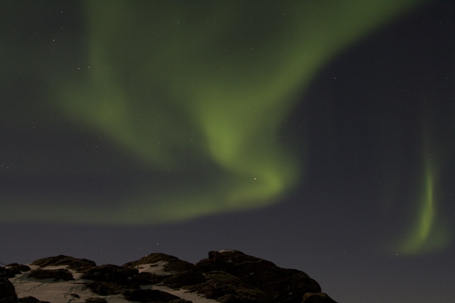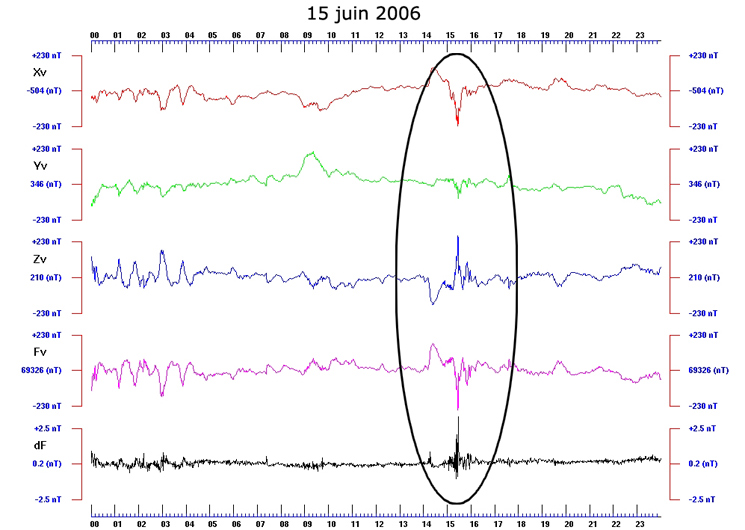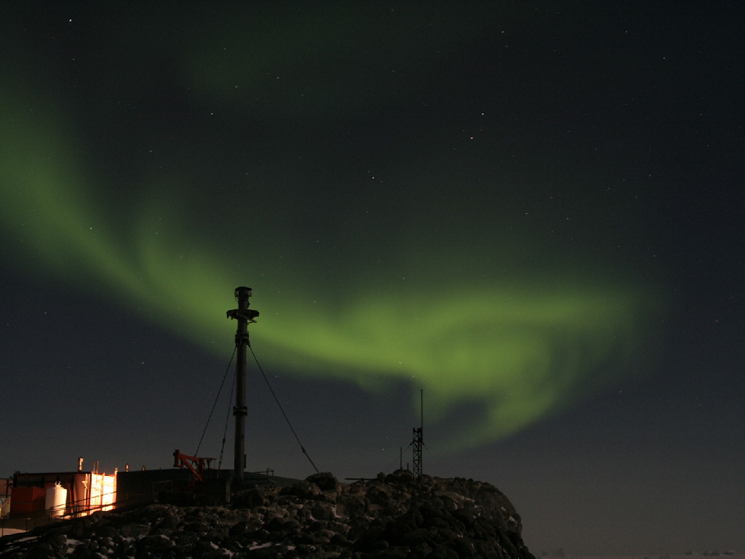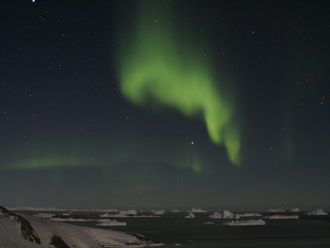|
|
|
|
|
|
|
>>
Aurora australis << |
|

 |
The polar
lights are a phenomenon which occurs in the upper atmosphere and
which appears during the night by the appearance in the sky of
gleams of which the form and the intensity can evolve quickly
and whose color is in general between the blue-green and the yellow,
more rarely towards the red.
Frequent in the areas of high latitudes, they
appear exceptionally with the average latitudes, in period of strong
solar activity. According to the hemisphere where they are observed,
they bear the name of aurora borealis (Northern hemisphere) or
australis (Southern hemisphere). |

Aurora australis -
Terre Adélie, june 2006.
© Samuel Blanc |
|
| |
|
Screens saver to download
here. |
|
More pictures
here. |
| |
|
Principle of
formation:
The sun emits a flow
of electrically charged particles continuously called solar wind. By
reaching the Earth, the majority of these particles are deviated by
the magnetosphere; the magnetic field of the Earth, and take again
their race in space. However, when solar wind is particularly
intense, as it is the case at the time of a solar storm, a great
number of particles enter the atmosphere while following the field
of force of the terrestrial geomagnetic poles. The energy particles
enter then in collision with the atoms of the upper atmosphere which
release the surplus of energy in the form of light, which causes the
polar lights.
This intense magnetic
activity, is found on the various readings taken like below at the
time of the episode of June 15, 2006 out of Adelie Coast. One
notices the strong variations of the magnetic field in the
neighbourhoods of 3:00pm (hour universal time) that is to say
11:00pm
(standard times), hour to which was observed a superb
dawn. |
|
|
|

Variations of the magnetic field at the time of the aurora
australis of June 15, 2006. |
|
|
|

Aurora australis -
Terre Adélie, june 2006.
© Samuel Blanc |

Aurora australis -
Terre Adélie, march 2006.
© Samuel Blanc |
|
|
|
|
|